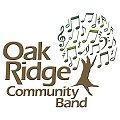Okay, honesty time... and hopefully this will be helpful.
First, overall, I think the work is film-esque. It would make for a great soundtrack to a movie or game (maybe even an audio book or some lengthy online commercial). So, keeping perspective in mind (that I like this 'for' that kind of genre), I want to just make sure to begin with a positive. You've put a lot of work and thought into this, I can tell. I think your ideas have grit and hold interest. So, these are all positive things that should be said... from beginning to end, you held my interest either with your sonorities in Part I or your intensity and (what I'll call) your 'vamping' of the rhythmic pattern in Part II. I'll dissect some of these things for each part below, but I've also got to bring you back to earth just a bit.
A 15 minute piece is not 'short' in the professional performance arena. I have a 5'30" piece (Eternal, posted in this forum) that is likely too long to be programmed by a majority of professional groups. If I wanted to get an orchestra to read my work, I'd probably get 'some of it' read, maybe 2-3 minutes of it. Only if I was very lucky would the whole piece be read by a professional group from beginning to end (if the conductor asked the performers to remain an extra couple of minutes to read the whole thing and the performers agreed to rehearse it 'for free' - and performers like to get paid, they WILL make a fuss if they don't like the whole work). My strategy is to get the conductor and performers to just read 'some of the work' and 'want to hear the rest' as they are reading it. It's a longshot, but it's worth it if it works. I want my music to be convincing enough for performers to 'want' to keep playing it...
This is your 'criteria'
From a perspective of 'performance', the work is far too repetitive... you'll get a couple of minutes of reading time, professional performers will likely catch on to how repetitive the work is, and they may feel a little disappointed or disinterested. It's not about the sound or the quality of the work... I'm just trying to point out that this piece, when performers look at it, is going to be viewed upon with entirely different lenses. So, 'variation' and 'interest' are 'key' ingredients here that I just want to touch on. My suggestions are only 'suggestions', don't look at this as 'your piece sucks, this is better'... all I'm looking for are ways to create more variety in different sections of the ensemble where this repetition is taking place so your performers will not only love 'hearing' your piece, they'll love 'playing' it.
Minor Score Edit Note: F Horns, when arranged on two staves, are traditionally grouped 1st & 3rd Horns on one staff, 2nd and 4th Horns on the next staff. I don't know if you were aware of this, I just wanted to make sure to mention it.
Part I
Strings (mm 1-22): You have the same, exact rhythm for 22 measures. I realize this is a mood-setting event, but you can break up some of the monotony through imitating the rhythmic events between the violins and violas. You might even like the sound of inverting some of your harmonies (keep the chords you have, just play with when the individual pitches sound and break those pitches up among the different string sections). You can create a 'sound-wave' from section to section which would be REALLY neat to hear from playing inside the orchestra, even if it caters more to the performers than to the audience.
Brass (mm 23-40): Here you have some whole notes sustaining some harmony with 3rd Tpt and Tbn playing some scalar linear material somewhat sporadically. It might be more musically convincing for those lines to have maybe just a little more melodic shape to work contrapuntally with the other families of the orchestra in those measures. You could state in the 3rd Tpt/Tbn the beginnings of this contrapuntal material, then use the horns, 1st and 2nd tbns, and maybe solo 1st Tpt in the upper register to sort of reinforce this activity... which reinforces the purpose of the original lines you have dedicated just to the 3rd tpt and tbn.
Woodwinds (mm 1-40): I'm just kind of bored with the use of the Piccolo and Flute... I think the 40+piece string orchestra is going to drown out most of your homophonic woodwind activity. What's interesting though, is you have nothing really doing much to reinforce the harp or dance around it other than the glock in the percussion. And night is a perfect time for little gestures like the Celeste/Glock (have you considered a Celeste instead of a Glockenspiel for that gesture, by the way?) to be reinforced by flutes and a piccolo. Let your Clarinets create some imitations of those gestures as well, deliver some real 'depth' to your 'Night'. And really try to develop that glock gesture more... give it a story, let it prance a little... give it more 'life'. Use the woodwinds to help you deliver that gestural component more convincingly so it doesn't feel so 'haphazardly placed.' Does that make sense?
Percussion - in general, they don't really care in orchestra. They're happy playing something interesting, they're happy not playing at all. They're probably the group in an orchestra you can abuse the most... so I'll leave all of that up to you.
Now, I've commented on Part I. If you want my comments on Part II, reply and I'll offer them. If this isn't helping you, then I'll stop here.

